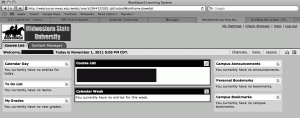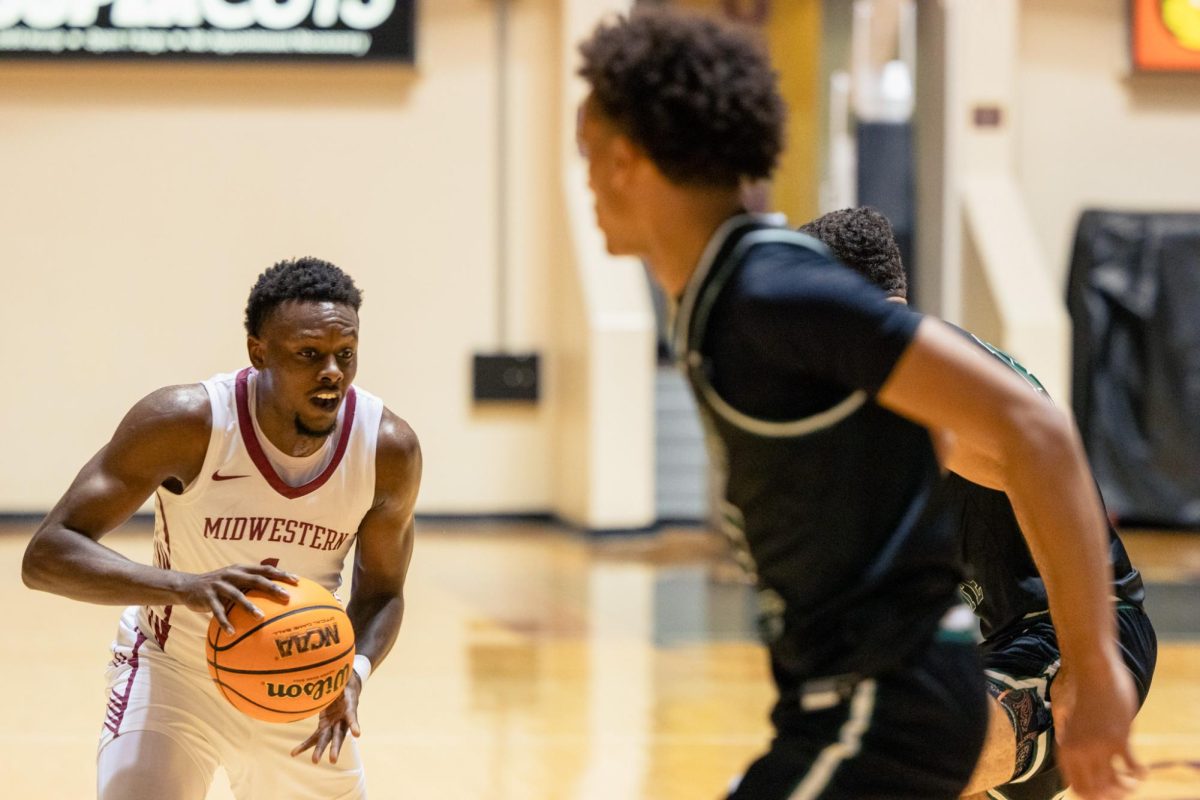By Rachel Helms
Online courses taken by students looking to obtain a bachelor’s or master’s degree from Midwestern have grown by 2,789 students since they started 13 years ago.
“As of Spring 2011, 171 students were taking purely online courses,” James Morris, WebCT technician said. “This number has grown every year.”
When online courses started in 1998, six students took advantage of the different style of class.
As times have changed, the popularity of taking classes on the web has expanded to 2,795 total in 2010.
In the Fall 2011 semester, 174 different online courses are offered to students ranging from financial accounting to special education law.
Among the popular courses, 21 nursing classes are offered along with 20 radiologic science courses and 11 criminal justice courses.
From 1998 to 2010, popular courses have stayed in the fields of nursing and radiologic science.
In these 12 years, 1,409 students were enrolled in the various 19 nursing courses and 708 students were enrolled in the different 17 radiologic science courses offered.
Radiologic science courses were the first classes to be offered online at MSU, said Dr. Pamela Morgan, associate vice president of outreach and engagement.
“They were already doing some distance education through other means,” Morgan said.
A main advantage of online courses to many students is the convincing factor.
They never have to step into a classroom.
Degrees can also be obtained online, making these courses much more friendly to students.
MSU offers many bachelor’s degrees online in radiologic science, respiratory care and nursing.
Some students are drawn to solely online courses. Other mix them with traditional classroom courses.
In 2004, MSU began tracking the type of student, fully online or blended, enrolled in online courses, said Julie Gaynor, director of public information and marketing.
In 2010, 13.6 percent of MSU students were taking courses on the Internet and in the class while 12.3 percent were enrolled in online courses only.
It is how they are comfortable learning, Morgan said.
“I like how I can sit in my room and take my quizzes and tests online,” sophomore Cassi Cox said of her online economics lass. “It is very easy to manage and makes learning a lot more interesting.”
Self discipline plays an important role for a student in online courses.
It requires a student to sit down and pay attention to the work that is put in front of them on their computer screen, Cox said.
“It isn’t very hard to find the time to sit and do the work, but the student has to be willing to log off of Facebook for a set period of time and focus on what is really important,” she said. ‘After all, it is still school and grades are still going to be given, even if the class was just online.”
In the College of Humanities and Social Sciences, the Bachelor of Applied Arts of Sciences online degree is popular.
It is currently part of the Grad TX initiative to help adults return to college and complete their bachelor’s degree, Morgan said.
Applied arts and science courses have been offered since 1998 and have had 116 people take part in them.
Master’s degrees can also be obtained online through MSU. They include training and development, nursing, health administration, public administration and radiologic sciences.
The Post-Master’s Certification Program for Family Nurse Practitioner and Nurse Educator can also be completed online.
“Many students would not be able to finish or pursue a degree without the opportunities provided by online programs and classes,” said Morgan.
Online courses work for one reason: the faculty that is in charge of them, said Morgan.
The faculty teaching online courses meet the same criteria as a classroom professor and come mostly from MSU’s full-time faculty. There are a few teachers who are active in online courses only and are adjunct professors, Morris said.
“They have worked hard since we began the Internet effort to develop and provide online opportunities to students,” Morgan stated.
The academic colleges on campus make the decision to put classes online or to use a traditional in-classroom setting. All classes offered online meet the same requirements as classes on campus.
Teachers lecturing in a normal classroom setting have the option of using supplemental instruction on WebCT, the online program used for online classes, said Morris. This gives a student an idea of how an online course might work if they have not taken one before.
According to the Distance Education’s website, the university has the right to limit enrollment to students with a definite need for distance education.
“Families, jobs, and geographical limitations all play a role in the need to offer more online courses to our students,” Morgan said.
Information can be found on the campus website under the Distance education Department.
“I would definitely recommend online courses to a student,” Cox said. “They are an interesting alternative to sitting in class for a period of time to get credit for courses.”

















